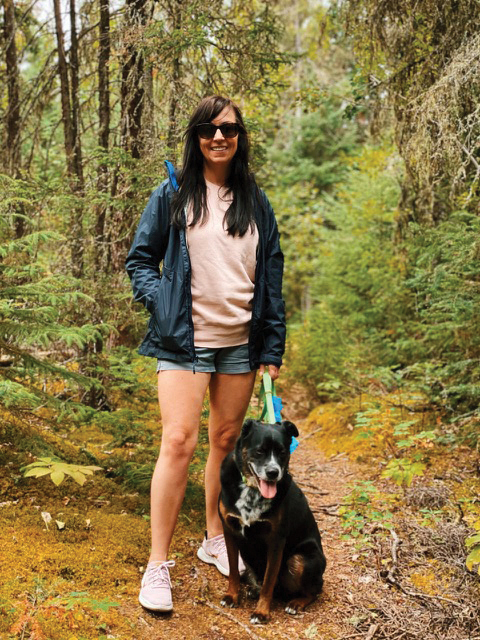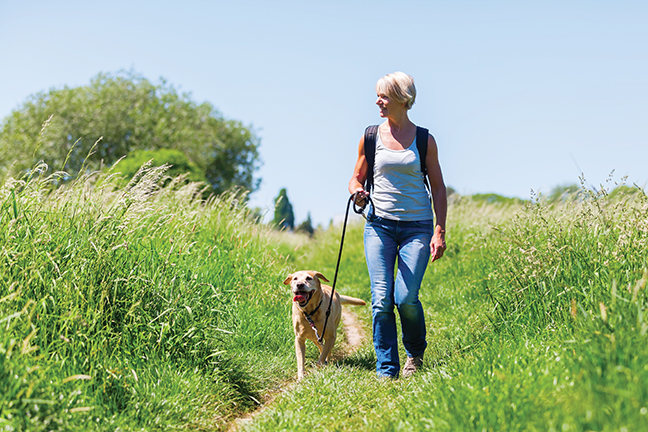Explore beyond your cabin door
Tips for hiking with your furry friend
Advertisement
Read this article for free:
or
Already have an account? Log in here »
To continue reading, please subscribe:
Monthly Digital Subscription
$0 for the first 4 weeks*
- Enjoy unlimited reading on winnipegfreepress.com
- Read the E-Edition, our digital replica newspaper
- Access News Break, our award-winning app
- Play interactive puzzles
*No charge for 4 weeks then price increases to the regular rate of $19.00 plus GST every four weeks. Offer available to new and qualified returning subscribers only. Cancel any time.
Monthly Digital Subscription
$4.75/week*
- Enjoy unlimited reading on winnipegfreepress.com
- Read the E-Edition, our digital replica newspaper
- Access News Break, our award-winning app
- Play interactive puzzles
*Billed as $19 plus GST every four weeks. Cancel any time.
To continue reading, please subscribe:
Add Free Press access to your Brandon Sun subscription for only an additional
$1 for the first 4 weeks*
*Your next subscription payment will increase by $1.00 and you will be charged $16.99 plus GST for four weeks. After four weeks, your payment will increase to $23.99 plus GST every four weeks.
Read unlimited articles for free today:
or
Already have an account? Log in here »
Hey there, time traveller!
This article was published 21/07/2022 (1235 days ago), so information in it may no longer be current.
Much of the beauty of cabin life is in exploring the terrain. It’s even better with a furry friend by your side, though you’ll want to take measures to keep you both safe and healthy.
Pick your path
“Almost every trail in Manitoba is dog friendly,” says Jaime Manness, a longtime volunteer at Trails Manitoba and founder of Hike Manitoba. The exception is Brokenhead Wetland Interpretive Trail, due to its fragile ecosystem. A quick online search will tell of advisories and closures, or you can inquire at your local park office.
“Almost every trail in Manitoba is dog friendly.” – Jaime Manness, volunteer at Trails Manitoba and founder of Hike Manitoba.
Train for the trail
Manness’ first hike with her dog ended with a friend having to carry her blue heeler mix—11 months old at the time—over his shoulder.
“I have to make sure he has the same level of fitness and endurance that I do,” she says, “and not just assume that because he’s a dog, he can go anywhere.”
Long walks and challenging hikes through the winter will keep you and your dog prepped for a summer on the trails.
“I have to make sure he has the same level of fitness and endurance that I do,” she says, “and not just assume that because he’s a dog, he can go anywhere.” – Jaime Manness, voluneer at Trails Manitoba and founder of Hike Manitoba.
Protect your dog from disease
Deer ticks are common in the Manitoban wilderness. These ticks can carry Lyme disease, anaplasma and ehrlichia—diseases that can have serious, if not fatal, side effects in dogs.
“The best thing you can do is have your dog on preventative medicine,” says Dr. Bronwyn Chisholm, of Seasons Veterinary Clinic. “They stop ticks from biting long enough to transmit disease.”
If your dog gets a tick, don’t panic.
“Ticks don’t actually burrow,” says Dr. Chisholm. “Grab the skin around where the tick’s mouth is and pull the tick off. Take a picture or put it in a jar and get it checked, so we can tell if it’s a deer tick and if we should be concerned about it carrying disease.”
Be prepared
Dress in layers with appropriate footwear. High-quality hiking boots are ideal for rough terrain, though sneakers and trail runners are fine for smoother trails.
A comfortable backpack to haul your gear is a must. Dogs may be able to carry backpacks too, filled with up to 10 per cent of their body weight, but they should be introduced gradually.
And, don’t forget the leash.

Manness once encountered a bear on a trail and her dog, after recovering from the initial shock, tried to lunge at it.
“Had he not been on a leash, he definitely would have charged at the bear,” she says, “and I feel like that would not have ended well for any of us.”
Extra food and water are important, too.
“Pack high-calorie food that won’t spoil in the heat,” says Jenine Thompson, a manager at Best West Pet Foods, “and you don’t want to leave your pup drinking from rivers and streams.”
Water sources can change through the seasons, so bringing a water bottle and travel bowl will ensure you and your dog stay hydrated. A cooling bandana or vest for your dog can also be helpful in the heat.
Other essentials include:
• first aid kit, stocked with vet wrap, Benadryl (which is safe for dogs in a dose recommended by their veterinarian), dog booties in case of an injured pad or nail, and tweezers;
• an emergency blanket;
• flashlight or head lamp;
• knife;
• map or compass;
• light-up collar;
• dog sling; and
• biodegradable waste bags.
With a little planning, you and your dog will be ready to hit the trails and enjoy new adventures together.


